転 (Ten) = circuitous, winding, revolve
|
Dear Tony Interesting. A very intriguing and fascinating clip - and interpretation. much appreciated. The accompanying (original) Russian-language text (in English-translation) says this - might be useful: 'Video Content: Goju Ryu Master - Morio Higaonna - (citizen of two countries - US and Japan). Morio Sensei performs Sanchin kata (with kaiten - rotation 180°) at a meeting with Chinese delegations. This friendly meeting occurred in the lobby of the hotel where Morio Higaonna was staying. The purpose of the trip to China was to explore the roots of Goju Ryu - and meet Chinese martial arts teachers.' The Russian word "кайтеном" (kaytenom) appears to be rendered as "Kaiten" within phonetic English. I found this Russian-Language Aikido text (fed through a translator below) which discusses the Japanese martial arts technique of "Kaiten nage" (Rotate-Throw): Therefore: Japanese "Kaiten" (кайтеном - kaytenom) = 回転 回 (Kai) = turn, go back, retrace steps 転 (Ten) = circuitous, winding, revolve In this instance, a spiralling 180° - about-face (half a circle) - transition. Chinese people refer to the "回転" (Kaiten) ideograms as "Hui Zhuan" - an evading-turn that radically re-directs the opponent's energy.
0 Comments
The above is a video on Bili Bili designed for Goju Ryu practitioners in China (or Chinese language speakers around the world). Essentially, Chinese language subtitles have been affixed - with Okinawan-Japanese concepts (cultural interpretations) translated into Chinese philosophical terms. This was uploaded on September 7th, 2022 - but I have not encountered it before. The direction of breathing is explained (stating there are two methods) - with 'kime' (決め) emphasised. This is written as '决定' (Jue Ding) in the Chinese language. 决 (決) = jue2 (ki) - certainty, dredge and kill 定 (め) = ding4 (me) - steady, fix and stabilise Interestingly, within Buddhist philosophy the Chinese ideogram '覺' is also catalogued (within modern Pinyin) as 'jue2' - and is related in structure to '决' (jue2) which is used above in 'kime'. This means the ideograms share a common root and depicts a related meaning. Whereas '决' (jue2) suggests a mind-enforced control over the body - '覺' (jue2) refers to the achievement of 'enlightenment' through the mind 'waking-up' - a state achieved only through following the utmost disciplined paths of bodily control. Perhaps the two variants of these ideograms are related. I would suggest this is the case on the grounds that '定' (ding4) - the second ideogram used within 'kime' - is also used to translate the Sanskrit term 'Samadhi' - which refers to a method of 'fixing' the awareness of the mind in one place (preventing the surface mind from moving about without control) - and thereby achieving a permanent 'stillness' of mind (which allows for the perception of 'emptiness'). Again, the physical body is subject to the utmost discipline (through the Precepts as taught in the Vinaya Discipline). The breathing is 'Daoist' in nature and involves a basic filling-up of the dantian with qi (inward breath into the lowest area of the pelvic girdle) - which is then redistributed throughout all the regions of the body (through the outward breath). The retained tension 'pulls' the qi into the dantian - and the maintained muscle tension 'extracts' the accumulated qi into the extremities (both breaths meditated by the awareness of the mind). The 'advanced' breathing is only hinted at and involves the microcosmic circulation of the qi. Qi is breathed into the dantian - which triggers the flow of qi up the Governing Vessel (which runs through the spinal column) and over the top of the head to the upper palate of the mouth. The tongue touches the upper palate with completes the circuit between the Governing Vessel and the Conception Vessel - which starts in the tongue, flows down the front of the body and through the grown and around to the perineum - where the Governing Vessel begins. The Sanchin breathing strengthens and maintains this Daoist breathing.
Dear Tony Thank you for your interesting email regarding the relatively 'open' stance as found throughout the various lineages of Fujian White Crane Fist when practicing the 'San Zhan' (三戦) or 'Three Battles' Form - as compared with the 'closed' stance work (and obvious groin protection) found within the 'Sanchin' Kata of the Goju Ryu Karate-Do Style! Yes - I have noticed this. I was talking to a student about this. It reminded me of the stance used for skiing. As if 'gripping' or 'stabilising' on a slippery surface. Sometimes, the old Masters (such as Master Chan) would talk about stepping in, through or onto congealed blood - which is slippery. He fought, wounded and killed invading Japanese soldiers during WWII (1941-1945) as part of the Hakka Resistance operating throughout the New Territories (a People's Militia had developed - supplied from the Mainland). His father (Chan Yun-Fat) was killed fighting in 1944 leading an attack on an Imperial Japanese Army position - armed only with traditional gongfu weapons. This was a diversionary attack whilst those armed with the limited number of rifles and ammunition attacked the main target. His wife's mother was gang-raped by Japanese soldiers, skinned, hung-up by her hair and set fire to. Por Por (Mrs Chan) used to tell us stories for years about those terrible times - until her passing in 2011 (years later, a Detective contacted Mrs Chan and said one of her brothers had survived a Japanese village massacre and had been taken to Australia by foreigners - she got to meet him again one more time in his now native Australia a year before he passed away. I spoke to him on the telephone. He was around five years old at the time of him going 'missing' - with his small body being hidden under the bodies of the adults killed around him). We practice falling to the ground forward, backwards and to the sides in our Hakka Longfist Family lineage - and using Ground Fighting (with a groin guard and a head guard). I suspect that other aspects of the Fujian Style in question also teach a groin guard in an accumulative sense - as is usual in traditional gongfu. Goju Ryu is highly rationalised and modernised (a process of sheer genius) - which is a good thing - but traditional gongfu is often sprawling, illogical and difficult to fathom! Thanks PS: Wong Tai Sin is our 'Daoist' family God - as Master Chan Tin Sang (1924-1923) was a TCM Doctor (taught in the old way). It is virtually impossible to acquire statues of this 'healing' God as it is very carefully guarded by the Temple Authorities in the New Territories! We have a photograph on our family shrine - but my ex-wife currently looks after the family Wong Tai Sin statue (which was passed into my keeping by Mrs Chan upon her passing). Indeed, my ex-wife can be seen on the above-linked BBC programme - 'Escape to the Country' with our family statue of Wong Tai Sin (黃初平) shown at 5:39:
Dear Tony Xiangdian Fist: I say 'Form' - but the ideogram used is '套' (Tao) which usually refers to a 'Set' or a 'Pattern' of prescribed movements (that is a 'routine') - as opposed to '形' (Xing) meaning 'Form' or 'Shape' (pronounced 'Kata' in the Japanese language). Whereas '套' (Tao) refers to a set movements (like beads strung on a cord) - the term '形' (Xing) refers to the heart or foundation of a Style which 'manifests' through every movement that is performed. As within Goju Ryu - the 'San Zhan' (Sanchin) Form is learned first - and then seems to be followed by the first and second 'Sets' included above (although 'San Zhan' is also referred to as a 'Set'). The translation is a little laboured as a 'Fortress' is mentioned which has its immediate environment (around the foot of the external walls) continuously 'cleared' of enemy attackers! The Xiangdian Fist practitioner 'prepares' to achieve this function through correctly practicing these 'Sets' - the sum total ability accrued is then used against an attacker(s). Or, a robust defence 'removes' the threat of any attacker - as the Xiangdian Fist practitioner is always 'prepared'. I am wondering whether any of this might relate to the development (in theory at least) to the 'Gekisai' (撃砕) [Attack-Shatter] Kata developed by Miyagi Chojun? Below are two videos showing how effective Xiangdian Fist can be: The second video features a Seventy-year-old old Master who wants to carry forward local martial arts in Fuzhou - and teaches young people Xiangdian Fist for free: Thanks
Dear Tony Without the capacity to breath - there is no conscious life. This reminds me of the pre-Christian use of the Greek term 'Psyche' which means 'breath of life' and which implies the 'autonomous movement' of mind and body. As Plotinus suggests - the breath (and the movement of mind and body) are inherently linked. This reality allows for a vast interpretation of the same basic idea(s) spread throughout the genre of Chinese martial arts. One layer superimposed over this foundational reality in the White Crane Fist System is that of the production of 'vibration' and 'shaking' - which appears to represent a scale (or polarity) between physical movements that are 'hard', 'soft' and 'neutral' - a layer of activity happening 'over' the breathing mechanism, so-to-speak. Or, so it would seem.
Thanks The traditional purpose of Karate-Do is said to be the development of the ‘Single Punch Precise Kill’ (一拳必殺) technique! This is because the historical origins of Karate-Do developed out of battlefield martial arts - specifically designed to kill and wound an opponent without mercy! The question for modern practitioners is whether this objective is suitable as a contemporary teaching device – and how should the technical inadequacies of the old ways be improved upon? It may well be the case that the potentially lethal elements of Karate-Do are retained (because they are inherent in the ancient martial techniques) - but that the ‘killing’ aspect should not be made the key point when teaching the public – and should be replaced by encouraging young students to develop their own minds and bodies whilst perfecting a virtuous character! Therefore, saving lives and helping others signifies a necessary shift in traditional attitudes when teaching Karate-Do to modern students. In fact, this is not a ‘new’’ attitude that I invented – but an idea taught to me by my father Miyagi Chojun. In-turn, this was an attitude inherited from Higaonna Kanryo (and his Chinese teachers). Although exactly the same ‘killing’ techniques are retained (and certainly not ‘removed’ from the art) - what is emphasised is character development so that clever ways of resolving conflict in the environment is utilised as a type of ethereal Karate-Do – that precedes any need to deploy potentially devastating physical techniques! The lethal reality of Karate-Do techniques, therefore, is ‘hidden’ within a deep and stratified approach to Goju Ryu Karate-Do, which is now embedded in the grading system involving coloured belts. If the practitioner does not suitably develop their mind (psychology) and body (physicality) - then they do not gain access to the ‘lethal’ nature of the genuine Goju Ryu Karate-Do techniques! Each practitioner must develop ‘trustworthiness’ before they are permitted to gain access to the deepest aspects of this ancient martial art! My father – Miyagi Chojun – maintained the emphasis of the ‘Hard’ (Go) aspect of Goju Ryu through the ‘Sanchin’ Kata which had been passed on to him by Higaonna Kanryo – but he felt the opposite element of ‘giving way’ was missing in the Style, or at least not very well represented. To remedy this, Miyagi Chojun developed the ‘Tensho’ Kata from a set of movements he had been taught in China from a White Crane Fist teacher in Fuzhou related in lineage to the Chinese teacher of Higaonna Kanryo. Bear in mind that ‘Tensho’ is NOT exactly the same as the Form (六機手 - Ro Ku ki Te) he learned in China and that Miyagi Chojun chose to modify its structure to assist the ‘balance’ of Goju Ryu Karate-Do methodology. This is where Miyagi Chojun developed the ‘Soft’ element of Goju Ryu which saw the Tensho Kata counter-balance the Sanchin Kata. When practiced together – the Yin (Soft) and Yang (Hard) energy within the mind and body is perfectly ‘balanced’! ‘Weaving Hand’ (機手 - Ki Te) is a principle found within the ‘Southern Fist’ martial system of China, and which relates to all the upper body movement of the extremities and the combat techniques which are expressed therein. Within the book entitled ‘Bubishi’ (武備志) (transmitted China to Okinawa) - there is an explanation of where the vital pressure points (経穴 - Kei Ketsu) are on the opponent’s body – and how the hand – used in the ‘open palm’ (開掌 - Hiraki Tenohira) position – can be used to ‘pierce’ these points and cause catastrophic damage to the opponent’s health! Higaonna Kanryo taught Miyagi Chojun how to ‘stand’ and ‘move’ through the ‘Sanchin’ Kata – and then Miyagi Chojun then developed ‘Tensho’ Kata to emphasis ‘Softness’ - but a ‘Softness’ with a lethal ‘hidden’ central element (involving pressure-point hitting)! The ‘Sanchin’ and ‘Tensho’ Katas are unique to Goju Ryu Karate-Do and are not found within ‘Shuri-Te’ (首里手) derived-traditions! These are foundational Katas that are taught to express the beginning and the end of the Goju Ryu Karate-Do training method! As this is the case, there are definite ‘breathing’ methods used when performing these Katas. The ‘Sanchin’ Kata employs what is referred to as a formalised ‘Yang Breath’ (陽の息吹 - Yō No Ibu Ki) - which sees the practitioner maintaining the ‘tightening’ of all the muscles around the bones throughout the entirety of the body – with the instructor continuously ‘testing’ to ensure this process is being adhered to correctly! Through these training methods, the practitioner learns how to shift and lower the centre of gravity, how to smoothly transition between various and different fighting techniques - all performed whilst breathing deeply and fully! Both myself and my father, however, teach preparation exercises which loosen and strengthen the body and focus the mind BEFORE any of these profound exercises are taught. This is important as students require a means of ‘entering’ the Style so that the Goju Ryu techniques are not experienced as a shock to the system. Correct preparation prevents unnecessary injury and conditions the mind and body so that the structures and processes become suitable for further and advanced training. This is the systematic application of the scientific process. Science does not stand still but provides opportunities for continuous and further development. Logic and reason must be brought to bear upon the established traditions using the old techniques and is immeasurable when providing a firm and dynamic foundation for further development! When I was young, Kano Jagoro (嘉納冶五郎) visited Okinawa (in 1927) and was very impressed in the rational approach that my father had incorporated into the structure of Higaonna Naha-Te (as it transitioned into Goju Ryu)! He even took elements of my father's training regimes and incorporated them into his ‘Judo’ training patterns! He agreed that logic and reason must be used within traditional martial arts as a means to ensure that these old ways are preserved and made relevant for survival within modern society! My father explained to Kano Jagoro that the structure of Karate-Do is similar to the physical structures of material objects – such as a house, a tower or a bridge, etc. If the design principles are not sound – the building and/or structure will not stand – and will not be able to fulfil the purpose for which it was made! The house will collapse, the tower will fall, and the bridge will give way! Kano Jagoro was impressed with this thinking and congratulated my father on his progressive attitude! Indeed, Kano Jagoro incorporated this type of thinking into his development of Judo technique! As for my father – Miyagi Chojun – he would later develop the ‘Gekisai’ (撃砕) Kata (Number One and Number Two), as a means to express the entire Goju Ryu Karate-Do path in just two short sets of movements which can be elaborated extensively when an instructor so chooses to do so! This was a substantial achievement which many other lineages of Goju Ryu misinterpret as being ‘simplistic’ or ‘beginning’ only Kata – but in reality, my father intended these Katas to be something much more important than this. If the ‘Gekisai’ Kata are closely examined, a whole new world of ‘meaning’ can be clearly discerned! This does not detract from the fact that the entirety of Goju Ryu Karate-Do is defined by the ‘Sanchin’ and the ‘Tensho’ Kata! When added together – there are ‘twelve’ (12) Kata preserved within Goju Ryu Karate-Do. The two ‘Gekisai’ are known as the ‘public’ Kata which are used to prepare a student for a more profound learning experience later on! Miyagi Chojun had a deep knowledge of geography and history as well as the Chinese Classics and was well versed in the different aspects of Eastern culture. I will never forget the image of my teacher - who used a dictionary as a pillow and would constantly look-up the meaning of words and think deeply about what he found! He was particularly knowledgeable about medicines and the physiology of the human body, and always studied Karate-Do from a medical point of view. This is why many of his acquaintances were also doctors. He studied Karate-Do from a modern and scientific point of view and designed its structure as a practical system! Indeed, modern Goju Ryu Karate-Do is designed around a scientific agenda which brings logic and reason to the practice of an ancient martial art! Although the techniques can be lethal if deployed a certain way – Miyagi Chojun ensured that the health-giving component of each technique was emphasised over its destructive element. An emphasis upon building a sound mind and a strong body replaced the destructive act of confusing the mind and harming the body of an opponent! Goju Ryu Karate-Do was maintained as a traditional fighting method with modern (medical) implications! 科学的空手道へ指導体系を確立 在来の空手道は、一拳必殺といわれるように、もっぱら実戦の場での殺傷の武術として発達してきたもので、術技のうえでも、現在の教育的見地からみれば、不適当な点もあった。 このため宮城長順は基本形―剛の形(サンチン=三戦)のほかに、「六機手」というものを研究して柔の形(テンショウ=転掌)をつくった。「機手」とは中国南拳の上肢の動作および技法のことを言い、沖縄に伝わった『武備志』のなかで相手の急所(経穴)を突く際の手(開掌)の使い方が述べられている。宮城長順はこの手法を研究し、鍛錬形としてテンショウを創始した。また、東恩納寛量から鍛えられたサンチンの立ち方と運歩法をはっきりと定義づけたのである。 サンチン、テンショウは首里手派にはなく、剛柔流空手道独自のものである。この基本形の鍛錬法においては、気息の呑吐法(陽の息吹)という形式化された独特な呼吸法があり、指導者による筋骨の締め方を伴う鍛錬法がある。こうした鍛錬法を通じて、「術技の変化」「気息の呑吐」「重心の移動」を体得するのである。 さらに宮城長順の創始したものとして、基本形・開手形に入る前に行う徒手体操式の空手道術技に関連した「予備運動法」と、柔軟で強力な体力を養成しながら空手道術技の上達を側面的。 に援助する補助運動法がある。この予備運動は修練上、非常に合理的な運動法であり、その重要性は計り知れないものがある。講道館柔道の創始者嘉納冶五郎が沖縄に来られ、そのとき師父が空手道の解説をしたのだが、嘉納師範は予備運動に非常に感心され、後の柔道体操に取り入れられたのではないかということを、私は師父から聞かされた。 また、教育的観点から、剛柔流空手道の普及形として、ゲキサイ(撃砕)第一、ゲキサイ第二の形を創始した。剛柔流空手道の形は、サンチン・テンショウの基本形と、二つの普及形を含めた十の開手形とを合わせ合計十二の形がある。 宮城長順は漢籍の素養はもとより、地理・歴史の造詣も深く、東洋文化にも通じていた。辞書を枕に絶えず辞書を繙き思索していた師父の姿が忘れられない。とりわけ薬種の知識、人体の生理に詳しく、常に医学的観点から空手道を研究していた。知人にも医者が多かった。そして空手道を近代的、科学的視点から考究し、練習体系として組み立てたのである。従来の空手道指導法を理論と実際に照らして修練の順序、方法を定め、武道として体育として、また精神修養の方法、健康法として、科学的に組織体系づけたのが剛柔流空手道である。
Miyagi Takashi [宮城敬] (1919-2008) – Miyagi Family Inheritor of Goju Ryu Karate-Do! (17.10.2022)10/18/2022 ‘I was born in Naha City during August 1919 (Taisho 10) and I am the eldest son of Miyagi Chojun (1888-1953) - the founder of Goju Ryu Karate-Do! My father taught me how to use my ‘hands’ (手 - Te) and ‘feet’ (足 - Ashi) during every moment of the day! He taught me where to ‘walk’ on the road, pavement or path – and where to place my awareness to stay safe! In a similar vein – he taught me how to hold an umbrella properly so that it looks innocuous but is really a ‘weapon’ that can be used in self-defence! For the Miyagi Family – Karate-Do was not only practiced in the ‘Dojo’ - but training of the mind and body continued throughout the entirety of our lives! My father – Miyagi Chojun – was a very popular person and knew many interesting and important people! He often told me about the famous people living in Okinawa - including military personnel and literary figures - who had come to live and work in Okinawa. Due to his wide range of associations, my father was well read, well-educated and took a general (and specific) interest in many different and varied subjects. As my father took me everywhere with him when I was young – I also met these people and often witnessed (and absorbed) the discussions as they unfolded! This is how my father ensured that I had a well-rounded education premised upon practical experience and intellectual stimulation! This is how I started the development of my mind and body and developed a sound foundation in the understanding of Karate-Do! I also understood exactly how my father thought about life and his general attitude toward Karate-Do! His personality clearly shone through during these interactions! As my father – Miyagi Chojun – believed that travelling expanded the mind, he advised me to travel to Kyoto and enrol for the Summer in a Martial Art College and study ‘Kendo’ (剣道). He respected Kendo and was very enthusiastic about me learning a different martial art! Indeed, through me experiencing Kendo training – I gained a far deeper understanding of Goju Ryu Karate-Do! My eyes were opened to a far broader view. I particularly benefitted from the Kendo technique of ‘Kakari Geiko’ (掛かり稽古). These are the techniques within Kendo which involve the development of a sound ‘defence’ - coupled with a penetrating and devastating ‘attack’. I used this experience (and knowledge) gained through my Kendo training in my later development of Goju Ryu Karate-Do! Shifu (師父) - we always referred to Miyagi Chojun by the respectful Chinese language term of ‘Master-Father’ - put a great emphasis upon ‘Preliminary Exercises’ (予備運動 - Yo Bi Un Do) that both ‘warm’ and ‘strengthen’ the bones, ligaments (joints), muscles and tendons! As these exercises are so demanding and arduous to perform and repeat – the ‘mind’ is fully developed as it is ‘calmed’ and ‘stilled’ over time! I took this crucial element of Goju Ryu Karate-Do training and developed it further so as to progress the Style. I developed what is referred to as ‘Hard-Soft Body Manipulation’ (剛柔体操 - Go Ju Tai Misao)! This is sometimes referred to as ‘Goju Body Mechanics’. This is a development within Goju Ryu Karate-Do that all of our students a) learn and b) perform – at the beginning of each public training session held in a Dojo. (The same situation applies to closed ‘private’ lessons where groups of students are training in a Dojo). Miyagi Chojun always followed the same training habits as his teacher Higaonna Kanryo (learned in China) - which involved the performing of the ‘Sanchin’ (Hourglass), ‘Shiko’ (Horse-Square) and ‘Nekoashi’ (Cat) Stances as ‘warm-up’ techniques. Miyagi Chojun was very strict when teaching these stances and would shout very loudly at the beginning of a training session to encourage the flow of energy and attentiveness of a student! The stance work teaches how to drop the bodyweight correctly, how to stand ‘still’ (rooted to the spot) and how to project the rebounding force forward and back correctly. Whilst practicing kata, Miyagi Chojun stated that each Kata possesses various (inherent) characteristics - such as how to stand, how to use the hands, how to use the legs and feet to kick correctly and how to move in any direction properly amongst many other important attributes. I was told to think carefully about what the concept of each individual Kata meant - and how each individual movement within each Kata should be accurately interpreted and performed. A defining aspect of Goju Ryu Karate-Do is that ‘distance’ is rapidly closed from ‘far’ to ‘near’ in a manner that exposes the opponent to danger whilst keeping the practitioner (traversing the ‘distance’) safely protect (through a superior technical positioning). This means that although there are variations and contradictions within the Kata movements of Goju Ryu Karate-Do – the emphasis is always upon ‘closing’ the distance and engaging the opponent with effective (and devastating) close-quarter-combat. The opponent is inundated and overcome with a variety of rapidly deliver and perfectly timed (powerful) martial interactions – involving the effective movement of the arms, legs and torso, etc. The movements, although ‘attacking’ - are delivered in such a manner that ensures the Goju Ryu Karate-Do practitioner is ‘safe’ whilst inhabiting the quiet ‘centre’ inherent within each set of movements. Quite often, words do not convey the totality of the defining principles of Goju Ryu Karate-Do – but words do serve an important supporting role in the teaching process. Obviously, individuals will understand what is said and taught to them according to their age, maturity and level of experience. This is why an effective teacher understands this and applies the teachings of Goju Ryu Karate-Do according to the level of awareness that a student brings with them into the Dojo. After-all, a good teacher is able to produce an equally good and effective student. When Master Miyagi Chojun passed away in 1953, I (Miyagi Takashi) was recognised throughout the Miyagi Clan in Okinawa as the true ‘Inheritor’ of the Goju Ryu Karate-Do ‘Lineage’. This is the ‘Family’ lineage which is separate and distinct from those other numerous ‘lineages’ transmitted ‘outside’ the family. The ‘Family’ transmission represents the ‘internal’ lineage – whilst all the other transmissions are representative of the ‘external’ lineage. This does not imply that one transmission is better or worse – but rather merely ‘different’. In the ‘Name Temple’ the pictures and the urns holding the cremated remains of the Miyagi Family are obvious for all to see (stretching back hundreds of years). I am part of this ‘Family’ transmission – whilst all those sharing in the ‘external’ transmissions have their own ‘family’ lineages that are separate and distinct (and all equally valid in their own right). Furthermore, it used to be that the ‘internal’ (Family) transmission was only taught (privately) within the family – whilst the ‘external’ lineages were public – but today, generally speaking, ALL ‘lineages’ are publicly taught to anyone who wants to learn. As for myself, I developed the ‘Komeikan’ (‘Transmitting Brilliance Training Hall’) during my time living in Tokyo to teach Goju Ryu Karate-Do (from 1951 onwards) to the general public as the only representative of the Miyagi Family. I have conveyed the teaching of my father – Miyagi Chojun – in a logical and correct manner, whilst also adding my own understanding. This is a process of evolution encouraged by both Higaonna Kanryo and Miyagi Chojun. Tradition is protected and conveyed through a process of continuous and relevant improvement.’ Japanese Source Article: 空手道剛柔流宗家として 剛柔流開祖宮城長順の長男として1919年(大正10年)8月那覇市に生まれた私は、幼少のころより師父の空手道人生と歩を一にしてきた。日常生活のなかで教えてくれた「手」の使い方、「足」の使い方、あるいは道を歩くときの注意、傘の持ち方等々、それら一つひとつが空手道における身体と精神の在り方の教訓であった。師父は人との交際も広く、沖縄在住の高名な方々や沖縄に来られた軍人や文人の方々について私によく語ってくれた。師父は、そうした広い交際をとおして、いわば教養人でもあった。私は常に師父の傍らに居ることで、その生活に溶け込んだ空手道精神と、その人生観、人格から多くを学ぶことができた。
私が京都の武道専門学校の夏期講習で剣道を修めたのも師父の奨めであった。この剣道修行は、私の空手道修行に新たな眼を開かせてくれ、掛かり稽古をはじめとした剣道の修練方法は、後の私の空手道指導法に大いに役立った。 師父の私への指導は、「予備運動」をまず徹底してやることだった。私はこの予備運動を「剛柔体操」と名づけ、 弟子たちの修練の最初に必ず行わせている。師父はまた、サンチン立ち、四股立ち、猫足立ち、前屈立ちなど立ち方をしっかり定義付け、非常にやかましく指導した。形の修練では、形の中にそれぞれ、立ち方、手の使い方、蹴り足の使い方、演武の方向などの様々な特徴があり、それらがどういう意味をもっているか、よくよく考えて修練するように言われた。 剛柔流空手道の形においては接近戦における妙技が至るところにある。これらはことばでもって十分に説明できるものではない。どう理解するかは修練者の武才というものもあるだろうが、やはり空手道の修練には良き師を得てはじめて真の空手道を会得するものであると思う。 私は師父宮城長順の死去により、空手道剛柔流宗家を受け継ぎ、空手道剛柔流宗家講明館を開設、講明館館長として東京において空手道の指導にあたってきた。私の指導法は、開祖宮城長順の指導法と指導精神を基礎に、戦後、私が考案した指導法の実際を取り入れて行っている。 Miyagi Takashi [宮城敬] (1919-2008): Establishing ‘Komeikan’ and Guiding Principles! (17.10.2022)10/17/2022 ‘It was around 1951, when I started teaching Goju Ryu Karate-Do in Tokyo (Mainland Japan). Immediately after WWII, there was a trend throughout Japan for Karate-Do to be firmly separated and divided into distinct ‘Styles’ - each with its own clear ‘lineage’ of teachers traceable all the way back into history - to a definite origination. National organisations were quickly formed, and this led to local branches throughout the entirety of Japan! An important element of this process involved the development and consolidation of Karate-Do training halls established throughout all Universities, Colleges and Schools, etc - forming a firm foundation of Karate-Do throughout Japanese culture. This was the start of modern Karate-Do seen not only throughout Japan – but also throughout the world! During this period, I received many requests to join various Karate-Do organisations, but I did not agree with much of the guiding principles or definitions that I was told. Instead, I independently formed the umbrella organisation of the Japan Goju Ryu Karate-Do Federation. This allowed a broad platform for a wide range of people to join and gather to train within Goju Ryu Karate-Do – but within this I also established the ‘Goju Ryu Family Head Brilliant Transmission Training Hall’ (剛柔流空手道宗家講明館 - Go Ju Ryu Kara Te Do So Ke Ko Mei Kan). The latter sub-group was designed to be very strict, narrow and highly disciplined with an exclusive membership. Together, this foundation served the basis through which I decided to teach Goju Ryu Karate-Do. During 1963 (Showa 38), I published two books which expressed this ‘external’ and ‘internal’ approach to my Goju Ryu teaching: a) ‘Karate-Do – How to Enjoy Practice’ (空手道の楽しみ方) - External b) ‘Orthodox Karate-Do – An Introduction’ (正統 空手道入門) - Internal This is how the Miyagi Family lineage of Goju Ryu Karate-Do was able to progress further and beyond its physical training centres! Individuals who lived a long distance from our training halls were able to pick-up these books and learn about our presence! This led to our group being contacted by NHK TV to enquire if I would participate in a filmed documentary entitled ‘Contemporary Record of Spiritual Revival’ (現代の記録・精神復興) - which was eventually broadcast TV on February 1st, 1964! In this documentary I was filmed practicing ‘Sanchin’ and ‘Seipai’ Katas! Around this time, the Nippon Budokan (日本武道館) was also established, whilst the issue of developing human resources was being addressed throughout a reconstructing Japanese society! The purpose of this programme with regard to Karate-Do was to explore the spiritual aspects of Japanese martial arts. Due to this influence, in 1966 (Showa 41), I set-up a Dojo in Kunitachi City, (Tokyo) and settled-down and started teaching Karate-Do in earnest. My teacher was my father – Miyagi Chojun. I was taught the ‘external’, ‘internal’ and ‘integrated’ path of Goju Ryu Karate-Do. This martial path has its roots within Higaonna Naha-Te – which was heavily influenced by Fujian White Crane Fist from China! All this was conveyed to me by my father and this education established the guiding principles through which I teach Goju Ryu Karate-Do. This is the ‘spirit’ of Karate-Do which must be maintained at all times through the replication (from one generation to the next) of the exact and correct physical Karate-Do techniques! Without this sound foundation the mind and body cannot be properly prepared so that effective offensive and defensive techniques can be correctly conveyed, learned and reproduced on the physical plane. The mind must be strengthened, expanded and freed from the dominance of the body – but this can only be achieved by disciplining the body so that the mind can be freed. When the body is properly positioned and perceived – the mind and body enter a new dimension of existence. Although Karate-Do has spread all over the world – I do not agree with sport Karate – which is a deviation away from the true ‘spirit’ of Karate-Do. It sets the wrong example and strengthens the very ego proper Karate-Do is designed to overcome! We must preserve the ‘spirit’ which manifests through the correctly performed physical techniques of Karate-Do! There should be NO fabricated ‘competition’ between individuals as this is the cultivation of pointless aggression! The only competition is between our conditioned minds and bodies – with our training colleagues conspiring to help us on our journey (and we on theirs)! The worst example of this development is ‘Kata’ competitions – where all the traditional purpose and value of a Kata is removed and replaced simply to ‘entertain’ an audience to win a pointless medal! To gain these awards – we lose the ‘spirit’ of genuine Karate-Do. The true purpose of Kata is being abandoned as each generation loses vital elements of the Kata passed on from China to Okinawa! Karate-Do begins and end with Kata and I would ask all the modern Karate-Do practitioners, Referees and other professionals to ‘think’ about this situation and perhaps assist one another in preserving the genuine spirit of Karate-Do! Please do not demean your sacred martial art – as untold numbers of people have suffered in the past to learn, preserve and pass on genuine Japanese martial arts!’ Japanese Language Source: 講明館の設立と指導理念 私が東京で空手道を指導し始めたのは昭和26年ごろである。戦後いち早く、わが国の空手道界では、各流派などによる団体結成の動きが見られ、また大学の空手部を中心とした連盟が結成されるなど、今日見られるように全国的な発展へつながっていったわけである。その間、私のもとに団体設立のために参加を求める声が何度もあった。しかし、私はどうもその在り方に同調できないでいた。私は独自に日本空手道剛柔流連盟を結成、剛柔流空手道宗家講明館を設立し、そこを本拠に指導に当たることにしたのである。
1963年(昭和38年)に空手道の初心者向けに『空手道の楽しみ方』や『正統 空手道入門』を出版、正しい空手道の学び方を世に問うた。また、NHKから請われ1964年2月1日放映の教育テレビ番組「現代の記録・精神復興」に出演し、サンチンの指導と形セーパイを演武した。このころ日本武道館の建設に着手され、「人づくり」の問題が高まっていた。日本武道の精神的なものを模索しようとしたのがこの番組の目的であった。その後、私は1966年(昭和41年)に東京・国立市に道場を構え空手道の指導に本格的にあたった。 私の指導理念は、師父宮城長順の指導法と空手道精神を基礎に、空手道本来の伝統性を維持しつつ、同時に教育的・体育的観点から身体のもつ攻防の技を自在に体得できるようにすることである。 空手道が全国的に普及したとはいえ、昨今、空手道の真の伝統性が失われ、いわゆる「競技空手」に終始した指導が見受けられるのは誠に残念である。最近は「形試合」も行われるようになったが、形の意味がわからずに演じられていたりして、形の乱れが目に付くものもある。したがって試合の審判方法と各流派の形についての研究をもっと真剣に行うべきだと思う。「形に始まり形に終わる」という空手道修行の警句を忘れてはならない。 Shanghai Karate Kobudo Bozheng (博正 ) ‘Abundant Justice’ School Author of the original text: Mr. Motobu [本部] (the grandson of Motobu Chaoji [本部朝基]) Authorization for Reprinting and Recreation Has Been Obtained (English Translation – Shifu Adrian Chan-Wyles PhD – 31.8.2022) A few days ago, I attended the Japanese Kobudo Martial Arts Conference hosted by the Nippon Budokan - and whilst watching various types of different (and diverse) martial arts being demonstrated on the big screen in the main hall - I saw Higaonna Morio (of the Okinawan Goju Ryu Karate-Do style) demonstrate the exercise known as 'Kakie' (カキエ’)! I checked the martial arts pamphlet which explained that this Okinawan Karate-Do practice is preserved only in the Goju Ryu tradition and is known in the Japanese language as ‘カキエ’ (Kakie) and described in the Chinese language as ‘靠基’ (Kao Ji) or literally ‘Support Foundation’ - but which can have many interpretations such as ‘Touch Root’ or ‘Feel Base’, etc. This term seemed to suggest a practice where two people attempt to ‘uproot’ one another moving backwards and forwards whilst touching at the wrist - simultaneously ‘negating’ one another’s attempts and maintaining their 'foundation' of balance and timing. However, I had never seen the Chinese ideogram ‘靠’ (kao4) before and so could not read it. I had to look it up an online Chinese language dictionary. 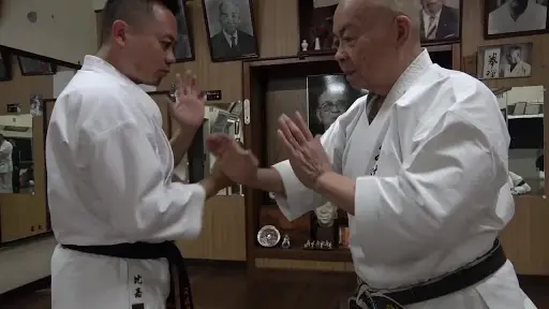 Kobayashi Ryu - Minoru Higa & Yasuo Kobayashi Ryu - Minoru Higa & Yasuo I discovered that the Chinese ideogram ‘靠’ is pronounced ‘KAO’, so when this adjustment is made to the original ‘カキエ’ (Kakie) Kanji - we arrive at the new Japanese term of ‘コウキ’ or ‘Kouki’. Now, as far as I am aware, the equivalent of Okinawan ‘カキエ’ (Kakie) practice throughout China is that of ‘Push Hands’ (推手 - Tui Shou) - but China is a vast place with thousands of different martial arts styles – some of which vary in outer expression even between Master and Disciple (for legitimate reasons that cause no trouble whatsoever)! It is the ‘inner essence’ that is the entire point of the ‘transmission’ and which must be penetrated by the disciple (rather than simply mimicking the surface structure). Therefore, there may well be a part of China where a version of ‘Push Hands’ (推手 - Tui Shou) was known as ‘Touch Base’ (靠基 - Kao Ji), or something similar. Speaking of which, what should the original Chinese ideograms be for ‘カキエ‘ (Kakie)? We must ask this question as this martial arts technique is believed to have originated in China. Although the author is not a person of ethnic Chinese origin, I do believe that every aspect of the history of the Okinawan Goju Ryu should be fully explored and discovered, and I consider it my duty to investigate this matter further to assist the common good! This is how I discovered the following interesting information. In an article written by Mr Miyazato Eiichi (宫里荣一) it is clearly stated that the Okinawan Goju Ryu Karate-Do practice known as ‘カキエ’ (Kakie) derives from the two following Chinese ideograms: 掛 (gua4) = Hang, Suspend and Arrive 手 (shou3) = Open-Hand, An Action in Progress and Master The so-called ‘Hang Hand’ is performed by two people facing each and ‘touching’ or ‘connecting’ a single wrist each assuming the ‘Hand-Blade’ (手刀 - Te-Gatana) or ‘Sword-Hand’ shape. The other hand assumes the same shape and is held close to the body covering the diaphragm and sternum (where it moves forward and back from that general area). this represents the hand-positions when the bodyweight is being projected ‘forward’. The mind must be ‘calm’ and ‘expansive’. There must be no distractions as you must ‘sense’ every ‘intention’ and every ‘movement’ of your opponent – and he or she must sense ‘none’ of yours. Meanwhile, as the purpose of the exercise involves each participant maintaining the wrist contact whilst moving ‘forward’ and ‘back’ as well as ‘around’ (usually in a ‘circular’ orientation), the two participants must remain ‘rooted’ to the ground – whilst simultaneously traversing smoothly across the terrain – regardless of what is happening with the upper-body. The ‘root’ of each participant must not be allowed to be ‘broken’ by the opponent's activity. In general, ‘Cat Stance’ (猫足立 - Neko Adaichi) is used on the retraction of the legs and bodyweight (whilst 'absorbing' or 'negating' the opponent), although sometimes a practitioner may adopt a more flexible ‘Sanchin’ (三戦) Stance which allows the dropped bodyweight (and forward and back motion) to flow easily from one leg to the other. The mind must be ‘receptive’ when ‘retracting’ and ‘absorbing’ your opponent’s ‘intention’ and physical force (bodyweight, momentum and will-power). When you ‘project’ your physical force (bodyweight, momentum and will-power) into and ‘through’ the opponent, quite often a momentary (and ‘high’) ‘Forward Stance’ (前屈立 - Zenkutsu Adachi) is adopted. You push me and I push you. You pull me and I pull you – as this practice is performed with muscular tension retained in the two connecting and opposing arms (all the way through the movement). The secret is to retain the tension in the touching arm whilst using the rest of the body in a very different, agile and relaxed manner. When the arms are forward the hands are held in a vertical orientation (fingers upwards) - but when the arms retract into the sternum area - the hands (and wrists) momentarily 'flatten' and 'cross' assuming a horizontal orientation. All this forward and back motion usually follows various circular trajectories! As the skill level develops, Kata applications are often applied, but in some Dojos it gets very rough with slapping, palm-strikes, punching and kicking naturally developing – just as long as the central exercise is retained. When both practitioners are suitably tired or exhausted – then you change sides (at certain levels this only happens when the teacher orders). The opponent must be ‘uprooted’ (or ‘imbalanced’) and you must not! Within Chinese ‘Push Hands’ the exercise may be performed with one or two hands – but the emphasis is on ‘sensitivity’, ‘timing’ and the ‘sudden’ and ‘precise’ application of ‘force’ at just the right moment – so that the ‘root’ of the opponent is instantly broken and devastated beyond repair! Body conditioning is not normally included within Chinese ‘Push Hands’ (as that is dealt with through different exercises), but with Kakie, 'body conditioning' and 'sensitivity' training are combined into a single exercise. Within the practice of ‘Kakie’ a practitioner must become ‘sensitive’ to the opponent in near combat conditions! This is a difference of style preference rather than a deviation of any kind. To master ‘Hang Hand’ takes a tremendous amount of fighting spirit and inner strength! The opponent will try to bully you off balance and you must negate all this and transform the entire process into a sublime martial activity! In other words, ‘Hang Hand’ uses the ‘hard’ to emphasis the ‘soft’ - but in the end the ‘soft’ completely absorbs the ‘hard’ and permanently transforms it! (Miyazato Eiichi "Okinawaken Goju Ryu Karate", 実業の世界社, 1978, pp. 52, 53) This information was provided to me by Mr. Andreas, a German karate enthusiast. It is the earliest article about カキエ(Kakie) I can find. The Chinese ideograms used by Mr Miyazato in this article are ‘掛手’ (Gua Shou), but there is a problem regarding linguistic association. Kakie can be written a number of different ways in the Japanese language, but we can use the two following examples that are both pronounced 'KAKETE' 1) カケデ 2) カケテ Within the Okinawan language, we can choose the following two examples to represent ‘Kakie’ which are both pronounced KAKITI: 1) カキディ 2) カキティ An obvious observation is that the Chinese ideograms ‘掛手’ (Gua Shou) on their own cannot be reconciled in any way with the Japanese-Okinawan concept of ‘Kakie’ (カキエ) in any of its contemporary Okinawan or Japanese renderings, as it looks like something is missing from this explanation. In other words, the two expressions sound nothing alike and cannot be logically (or ‘historically’) linked in this format. These two terms look and sound unconnected. Much linguistic confusion happens due to the differences between the Japanese and Okinawan languages, and the fact that there are a number of different Okinawan dialects. This complication is only increased when including the Chinese language. My view is that Mr Miyazato mistakenly thought that the Japanese term of ‘カキエ’ (Kakie) is represented in the Chinese language by only using the two ideograms ‘掛手’ (Gua Shou). I believe this error originates from Mr Miyazato mistakenly assuming that the two Chinese ideograms of ‘掛手’ (Gua Shou) 'negate' the Japanese (Hiragana) ‘け’ (Kake) character. This mistaken association was then applied to the general Japanese expression of ‘カキエ’ (Kakie) - and has since become the standard explanation (as Mr Miyazato was the first person to make this association in his 1978 article and it exists nowhere else in the older Japanese or Okinawan literature). Therefore, assuming that only these two Chinese ideograms of ‘掛手’ (Gua Shou) - or ‘Hang Hand’ - explain the entire martial arts concept expressed by the Japanese term ‘カキエ’ (Kakie) is an error of interpretation. (For the next part of my explanation please remember that the Chinese ideogram of '掛' (Gua) is pronounced 'Ka' in the Japanese language). I have applied a scientific analysis by comparing the standard Japanese expression of ‘カキエ’ (Kakie), with the reconstructed ‘掛け手’ (Ka Ke Te) - which combines the Chinese and Japanese ideograms that I believe Mr Miyazato mistook to mean ‘Kakie’ and which he thinks refers to the Goju Ryu practice. Indeed, today it is common to see the terms ‘‘掛け手’ (Ka Ke Te) and ‘カキエ’ (Kakie) presented side by side as if they are synonymous. The problem is that much of what passes today as ‘Kakie’ within the various lineages of Goju Ryu is in fact ‘Free Hand’ (散手 - San Shou) fighting where the participants are free to do any thing they wish with their wrists only ‘crossing’ for a moment at the beginning of the encounter! In my opinion, despite the surface differences, the practice of genuine ‘カキエ’ (Kakie) has much more in common with the Chinese martial arts practice of ‘Push Hands’ (推手 - Tui Shou), and not ‘Free Hand’ fighting. The two are completely different training methods that have no technical association. What should be the original kanji expression of 'カキエ' (Kakie)? The author thinks it is【掛け合い】which = 'Kakeai' (noun) = 'カキエー‘ (Kakiee) Definition: 掛け合い = Negotiate 掛け合い - is written as 'カキエー' (Kakiee) in Okinawa. The above text has the meaning of to ‘negotiate’ and 'resolve' differences and contradictions through cooperative interaction. 掛 (Chinese = gua4) (Japanese = ‘Ka’) - Hang, Suspend and to Arrive け Japanese (Hiragana) = ‘Ke’ - Approach, Close Distance and Remove Separation 合 (Chinese = he2) (Japanese = ‘ai’) - Meeting, Together and Mutual い Japanese (Hiragana) = ‘i’ - Give-Way, Compromise and Evade In Japanese【掛け合い】is interpreted as profoundly ‘communicating’ with one other. Therefore, the author believes that ‘カキエ’ (Kakie) is a martial arts exercise through which people profoundly ‘communicate’ with one another to end all conflicts, contradictions and misunderstandings! The above is also includes the Okinawan dialect expression of【風け合い】! In this way, both the 'pronunciation' and the 'meaning' can be matched with 'カキエ' (Kakie). Chinese Language Source: https://www.bilibili.com/read/cv7221475/
沖縄空手中カキエの漢字是什么?竟不是靠基? 运动 2020-08-18 13:20100阅读 · 8喜欢 · 0评论 原文作者:本部先生(本部朝基的孙子) 转载创作授权已获得 日前,我出席了日本武道馆主办的日本古武道演武大会,在控制室内通过大屏幕看着各个流派的演武,其中就有剛柔流东恩纳盛男先生演示的カキエ(KAKIE 差不多念卡ki耶) 我拿起手中的演武小册子看了一眼,册子上写的是「カキエ(靠基)」本人第一次看见【靠】这个汉字,所以当时没有办法读出来。 之后我上网查阅了一下,这个字念KAO,那么カキエ的发音就变成了コウキ(kouki)据我所知,在中国,カキエ这种练习法被称为推手,但是中国地大物博,所以我猜想可能也有地方把推手称为靠基的吧。 话说回来,カキエ原本的汉字写法应该是怎样的呢?笔者虽是剛柔流历史的门外汉,却也尝试调查了一番,结果就查到了宫里荣一先生的文章。 掛手 作为沖縄空手重要的補助運動,从古至今一直练习掛手的只有剛柔流。 所谓掛手,是指对练双方的两脚前后站立,以猫足立或者三戦立为练习站姿,相互之间以一只手(手刀)的手腕进行接触,另一只手开掌放在水月前。双方你压来也我压去,你拉我来我拉你,在此过程中,有时拗折对手的手腕,有时双手握拳把对手推开,为了不被推开,双方时刻保持警惕,腰胯和脚下必须“扎”得很稳,上半身则是放松轻柔地左右旋转,用身法避开使得进攻过来的对手失去平衡,通过拉扯把对手引向有利位置后摔倒。 一只手练累了,就换另外一只手,掛手的练习会持续到一方彻底没有体力了为止。一边是对体力的磨练,一边通过推拉来用自己手掌熟悉对方手臂的触感,这个练习并不是比谁的力气大。 在中国拳法里,被称为推手的练习,通常分成单手推和双手推。 掛手在锻炼全身肌肉的同时也在培养身心之迅敏,要进行长时间的掛手练习,没有斗志是根本做不到的。掛手就是这样的一种補助運動。 (宮里栄一『沖縄伝剛柔流空手道』実業の世界社、1978、52、53頁) 这个资料是德国的空手道爱好者Andreas先生提供给我的,是我看到过的最早的关于カキエ的文章。 宫里先生在这篇文章里使用的汉字是掛手,但是掛手在日本语里念カケデ或者カケテ(KAKETE 把KARATE的啦换成类似K的发音) 若是沖縄话则念カキディ或者カキティ(KAKITI)掛手这个词汇是念不出来カキエ这个音的。 虽然沖縄各地的方言不同,但是我想恐怕是宫里先生认为カキエ和掛け手这两种训练方法很类似所以采用了掛手作为カキエ的汉字吧。 我先前做了科普,カキエ和掛け手有什么不同呢?不同在于,カキエ类似推手,而掛け手类似散手,两者是不同的训练方法。掛け手不是那种两个手手腕互相接触进行推拉的训练方法,而是纯粹的自由組手。 那么,カキエ原本的汉字表述是怎么样的呢?笔者认为是【掛け合い】 カキエー /kakiee/ (名詞) 意味: 掛け合い。談判。 掛け合い在沖縄语里的发音是カキエー,虽然上述文字中有谈判的意思在里面,日语里则是把【掛け合い】解释为互相之间交流。 因此笔者认为,カキエ就是指双方通过手臂接触交流武艺的一种练习方法。是【掛け合い】的方言表达。这样一来,不管是发音还是含义都能和カキエ对上了。 Dear Tony (Sensei)
I hope that you and your family are well. What follows is the fruit of my most recent labours on this path of research! Memories of My Esteemed Master - Mr Miyagi Chojun [1] By Master Nakaima Genkai (仲井真元楷) {1908-1984} [2] I took my time over this and tried to extract as much meaning as possible. This is a Chinese translation (word for word) of the original Japanese language text. The Chinese author - Mr Wang Biandou - is a Karate practitioner in China. Now, he got this article from a 1978 Japanese language magazine that once featured Okinawan Karate-Do Masters (I believe Mr Wang possesses a copy of this magazine). I know that in 2008 a Japanese person made a 'word for word' English translation - but Mr Wang's Chinese version has 14 footnotes that he added that contain very interesting extra historical data about training with Miyagi Chojun! A colleague in China found a photograph of Okinawan people practicing martial arts in the open dated to the late 1800s! A Japanese friend of mine provided the impressive photograph of Master Nakaima Genkai! With Respect Adrian |
AuthorShifu Adrian Chan-Wyles (b. 1967) - Lineage (Generational) Inheritor of the Ch'an Dao Hakka Gongfu System. |
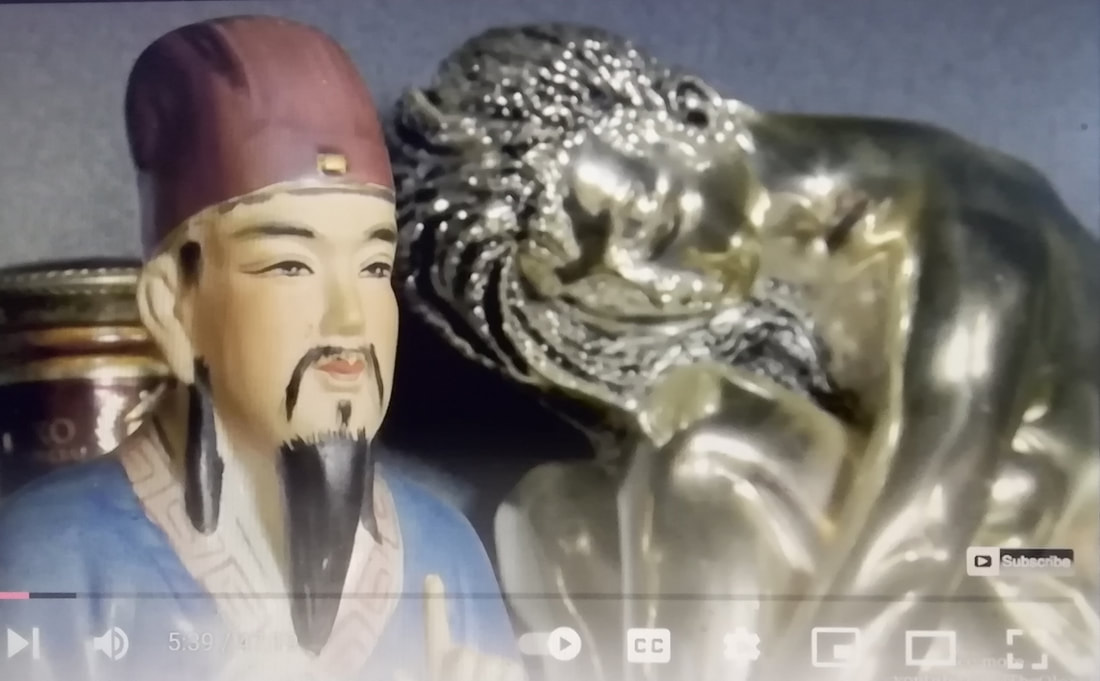
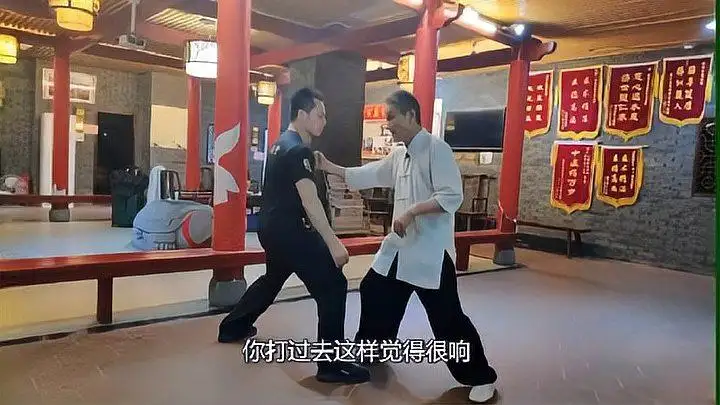
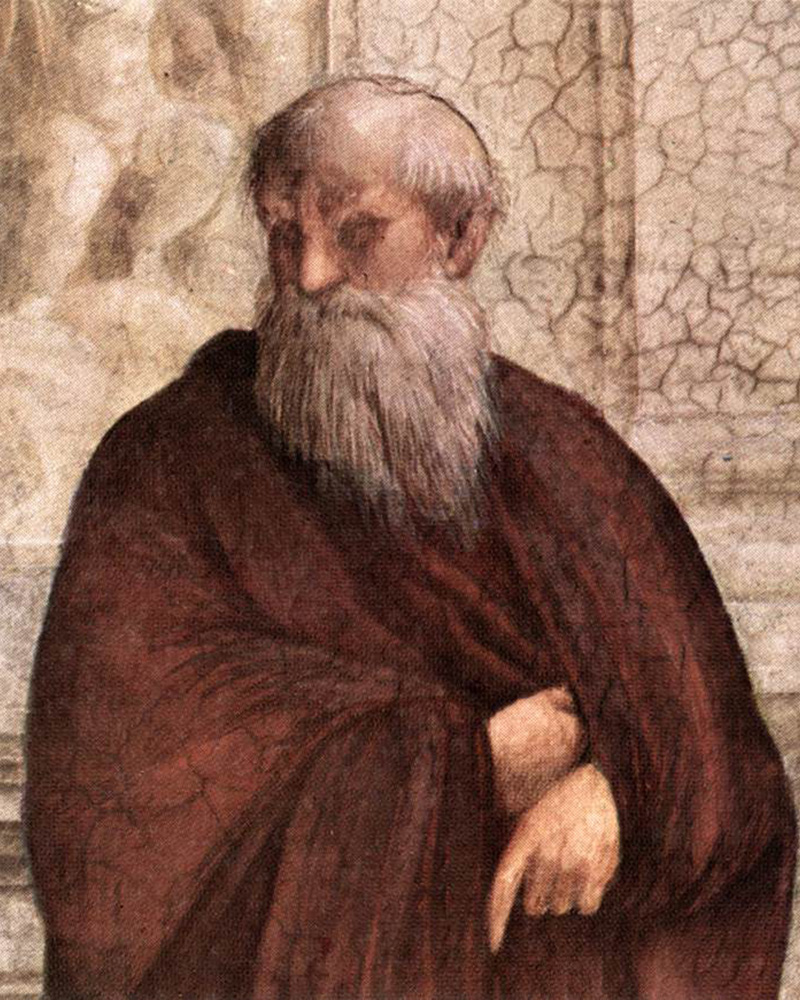
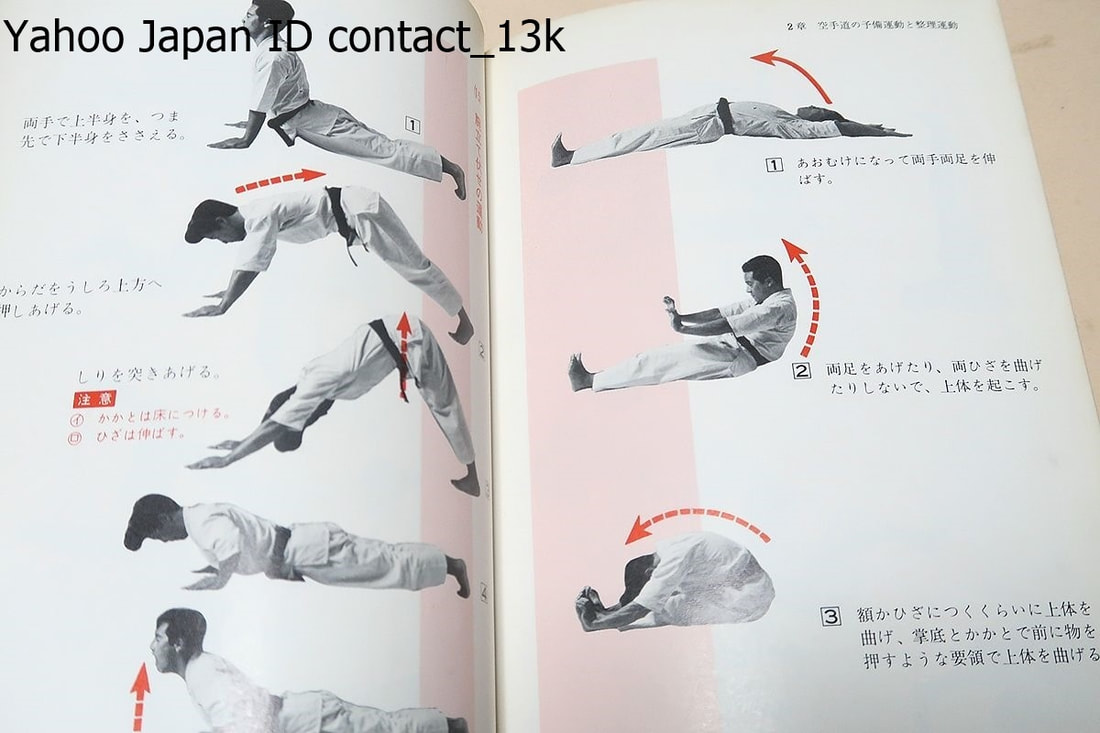
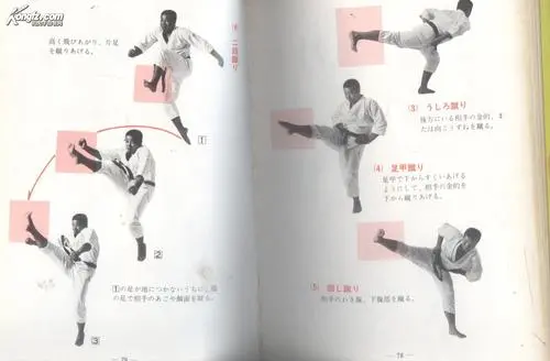
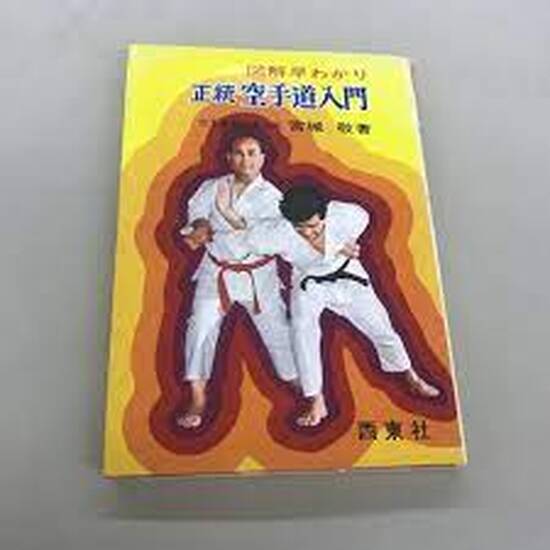
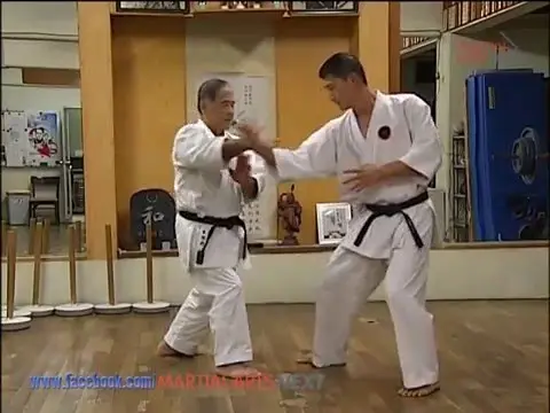
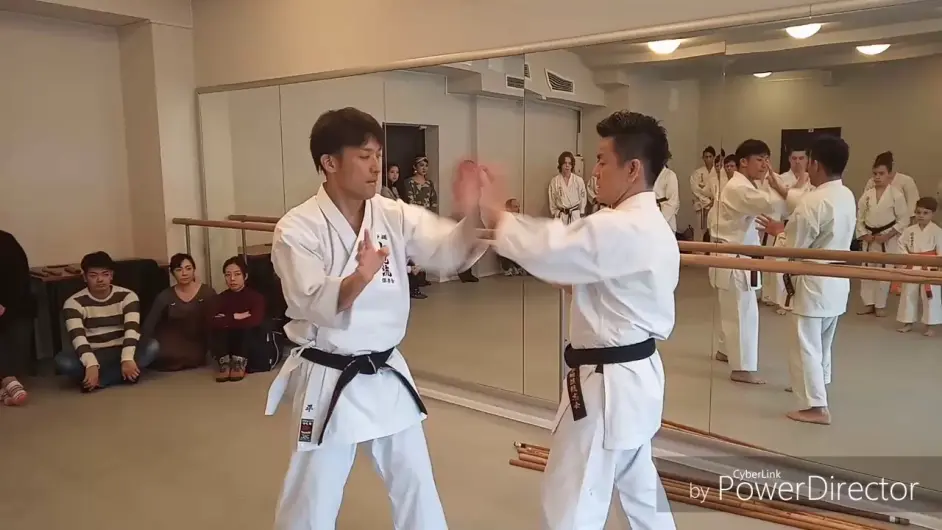
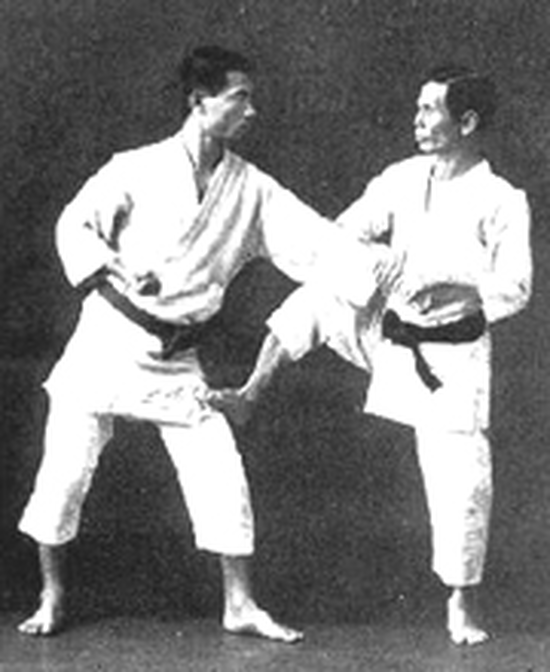
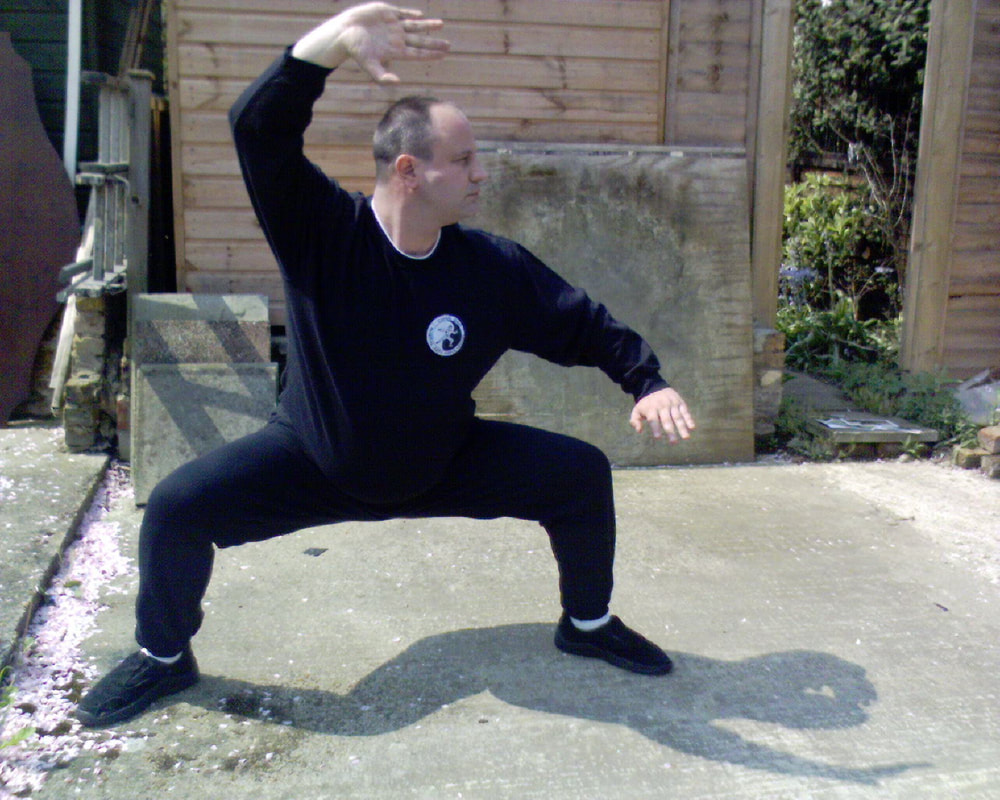
 RSS Feed
RSS Feed